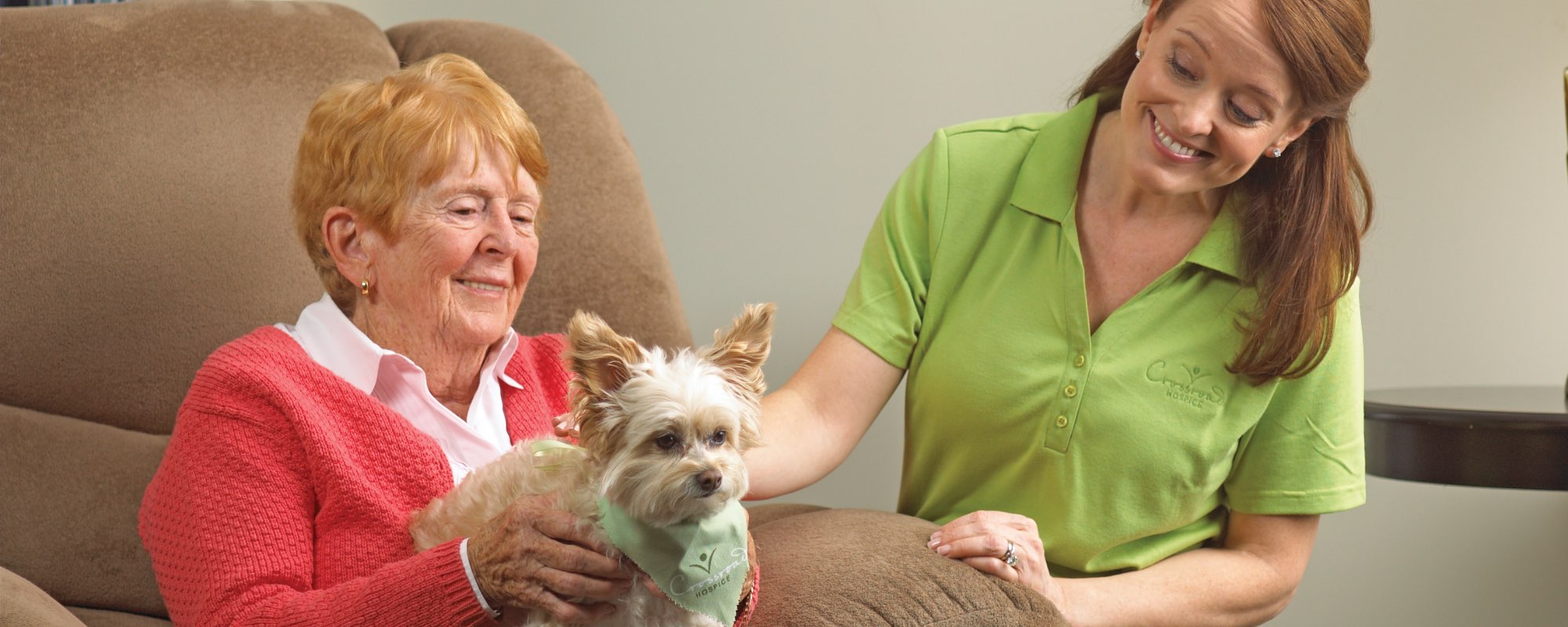
Transitioning to Hospice Care
At some point in a patient’s medical care, it may be time to make the decision to transition to hospice care.
It may be the doctor’s recommendation because it has been determined that curative treatments will no longer be effective.
It may be the patient’s decision because he or she no longer wants to travel to doctors and specialists, or pursue further treatment.
Regardless of the reason, there may come a time when the patient (and the patient’s family) needs to prepare themselves to make the transition into hospice care.
Let’s talk about what that means.
What is hospice care?

Simply put, hospice care is a form of medical care that provides comfort and dignity to a patient at the end of their life. Curative treatment is no longer sought. Instead, the focus is on making the patient as comfortable as possible, and giving them as much ability as possible to make the most of the time they have left.
When is it time to transition to hospice care?
Transitioning to hospice care is typically done at a time when the prognosis of a patient is such that their illness can no longer be cured or controlled and, based on their current prognosis, they likely have six or less months left to live if their illness follows it’s typical progression.
If you or the patient themselves determine that focusing on comfort care is the best option, you can request hospice care from your physician. You must have a hospice referral from a physician determining that you or the patient are qualified to spend the remaining six months or less focused on comfort care, as opposed to curative efforts.
Too many view hospice as “giving up” instead of what it actually is — refocusing the attention on quality of life. Many families say they wish they had contacted a hospice provider sooner, once they realize the benefits it provides to the patient and the patient’s loved ones. Especially since hospice care is normally completely covered by Medicare or Medicaid, meaning it costs you nothing for this important service.
It should also be noted that, at any time, a patient can choose to go off hospice and back to pursuing treatment options.
Transitioning from a hospital to hospice care.
Many times, a patient may be in a hospital when it’s determined that hospice care is the best option. Hopefully, the decision is made soon enough that the patient is able to get quality time at home, able to appreciate the time that remains with family and friends.
The transition from a hospital to hospice care is made easier by hospice providers like Crossroads Hospice & Palliative Care. We will:
- Respond quickly to conduct an assessment
- Coordinate an efficient discharge from the hospital
- Deliver all necessary medical equipment (such as a bed) to the patient’s home
- Provide all necessary medication related to the patient’s terminal illness
- Schedule visits for registered nurses, social workers, chaplains, and more
Transitioning from a skilled nursing facility to hospice.
For some patients, the transition from the hospital to home may include a stop at a skilled nursing facility for additional rehabilitation. When the patient is ready to go home, our team partners with discharge planners at the skilled nursing facility to ensure a smooth transition home.
The hospice team will ensure the patient’s home is ready for their return by delivering all necessary medical equipment, medical supplies, and medication related to the patient’s terminal diagnosis. Our team is available 24 hours a day, 7 days a week, 365 days a year to admit patients, answer questions, and provide care.
Transitioning from palliative care to hospice.
In some instances, a patient may already be receiving palliative care. This means they are being helped with the pain and discomfort associated with a chronic illness or the treatment of a chronic illness (such as nausea from chemotherapy).
If it is determined that it’s time to transition from palliative care to hospice care, the largest difference will be that the patient will no longer be seeking curative treatment.
This means discontinuing visits to doctors and specialists. In the transition from palliative care to hospice, the patient will instead receive visits at home from a team of end-of-life professionals including nurses, hospice aides, social workers, chaplains, and volunteers under the supervision of the medical director.
Hospice’s effects on caregivers and family members.

Hospice care is not only about providing everything a patient needs to live out the remainder of their life in comfort and dignity. Hospice care also takes into consideration the needs of family members, especially those who have been providing care up to this point and who might be continuing to provide that care throughout the hospice process. This includes providing emotional and spiritual support for patients and their loved ones, as well as answering questions and helping guide families through difficult decisions.
Deciding to take the next step and transition to hospice care.
Patients transitioning to hospice care often do so because treatment options for an advanced illness have been exhausted.
The time after transition enables family and friends to spend more quality time with the patient while they are receiving care that will help them be as comfortable as possible. We hope you’ll give Crossroads Hospice & Palliative Care the opportunity to help you and your family in this way. Please feel free to contact us at any time via the bar at the top of this page.
